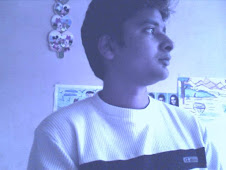
As of 2001 India census, Bhagalpur had a population of 340,349. Males constitute 54% of the population and females 46%. Bhagalpur has an average literacy rate of 64%, higher than the national average of 59.5%; with 58% of the males and 42% of the females literate. 14% of the population is under 6 years of age. Bhagalpur also has some of the best schools in the country, which may not be very famous, but provide quality education.
Some More Facts
1. The oldest poetry of the Hindi language (e.g., poetries written by Saraha, also known by the name Sarahapa) were written in the Angika language during the 8th century.
2. Angas and the Vangas are ranked as one of the first groups of Aryan people in the world.
3. Anga was one of the sixteen great nations (solas Mahajanapadas) which had flourished in central and north-west India in sixth century BCE.
4. The capital of Anga was Champa (Today's Champanagar). According to Mahabharata and Harivamsa, Champa was formerly known as Malini. Champa was located on the right bank of river Ganga near its junction with river Champa. It was a very flourishing city and is referred to as one of six principal cities of ancient India.
5. Champa was noted for its wealth and commerce. It was also a great center of trade and commerce and its merchants regularly sailed to distant Suvarna-bhumi (South east Asia) for trading purposes. The ancient name of region and kingdom of Champa of central Vietnam (Lin-yi in Chinese records) apparently has its origin in this east Indian Champa.
6. The temple of Angkor (in Angkorwat), largest religious structure of the world (According to Guinness World Records), is named so by the traders arriving from Anga Mahajanpada in India. For over 500 years from the ninth to the fifteen century, the monuments at the heart of the Khmer empire, Angkor Thome, were constructed by Anga-inhabitants (People belonging to Ang Mahajanpada of ancient India whose language was Angika.)
7. Angika is the only one of the oldest known languages which can be used in the Google Search Engine, Google-Angika has been available since 2004.
8. Angika is spoken by more than 30 million of Indian and around 50 million population
worldwide.
9. Vikramasila University was one of the two most important centers of Buddhist learning in India, along with Nalanda University. Vikramasila was established by King Dharampal of Bengal (783 to 820) in response to a supposed decline in the quality of scholarship at Nalanda. Atisha, the renowned pandita, is sometimes listed as a notable abbot.
10. Mahabharata (I.104.53-54) and Puranic literature (Matsya Purana: 48.19) attest that the name Anga had originated eponymously from the name of prince Anga, the founder of the kingdom. Matsya Purana describes the father of this eponymous hero as the chief among the demons (danavarshabhah).
11. The success of Angas did not last long. About the middle of sixth century BCE, Bimbisara, the crown prince of Magadha had killed Brahmadatta, the last independent king of Anga and seized Champa. Bimbisara made it as his head-quarters and ruled over it as his father's Viceroy. Thenceforth, Anga became an integral part of growing Magadha empire (PHAI, 1996).
12. Kadambini Ganguly (Born 1861 Bhagalpur) was the first female physician of South Asia to be trained in European medicine.
13. One of the best novelists of Bengali language, SharatChandra spent his boyhood in Bhagalpur with maternal relatives. Many of his novels are inspired by characters from his troubled boyhood, including ChandraMukhi of Devdas, who was supposedly a dancer called Kali from Bhagalpur's Budhanath/Jogsar area.
 A mall cum multiplex is coming up in Bhagalpur which will cater to the long pending needs to this area for a good marketing complex cum entertainment centre with other variety of options."Country club International" presents, FM-1 mall cum six screen multiplex at Barari Industrial Area, Bhagalpur,Bihar.This will be the first mall cum multiplex of eastern Bihar, a city famous for its fine silk.Only 3km from railway station & bus stand, 1/2 km from airport & national highway.FM-1 mall cum multiplex will have a food court with milticuisine restaurants,pub,fast food outlet and also showrooms of different brands.100% power backup ,equipped with high speed glass escalator & elevators, installed with modern fire fighting systems,highly secured with modern security systems.Six screen multiplex with dolby surround sound system with sharp quality projection.The close vicinity of the location to the commercial hub & hot spots makes it an ideal location for the vast inflow of tourists visiting Bhagalpur.
A mall cum multiplex is coming up in Bhagalpur which will cater to the long pending needs to this area for a good marketing complex cum entertainment centre with other variety of options."Country club International" presents, FM-1 mall cum six screen multiplex at Barari Industrial Area, Bhagalpur,Bihar.This will be the first mall cum multiplex of eastern Bihar, a city famous for its fine silk.Only 3km from railway station & bus stand, 1/2 km from airport & national highway.FM-1 mall cum multiplex will have a food court with milticuisine restaurants,pub,fast food outlet and also showrooms of different brands.100% power backup ,equipped with high speed glass escalator & elevators, installed with modern fire fighting systems,highly secured with modern security systems.Six screen multiplex with dolby surround sound system with sharp quality projection.The close vicinity of the location to the commercial hub & hot spots makes it an ideal location for the vast inflow of tourists visiting Bhagalpur..jpg)








